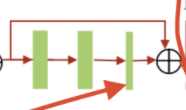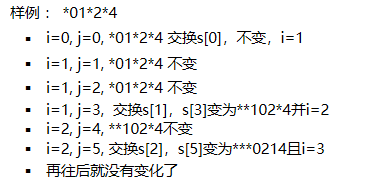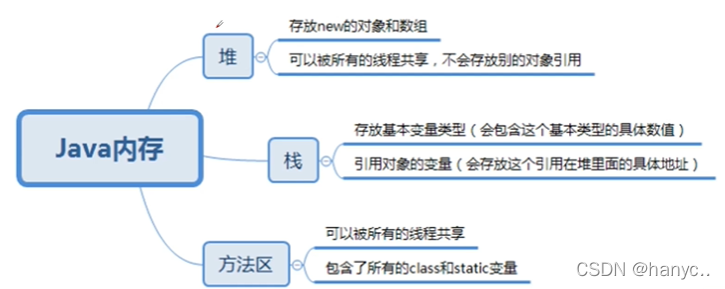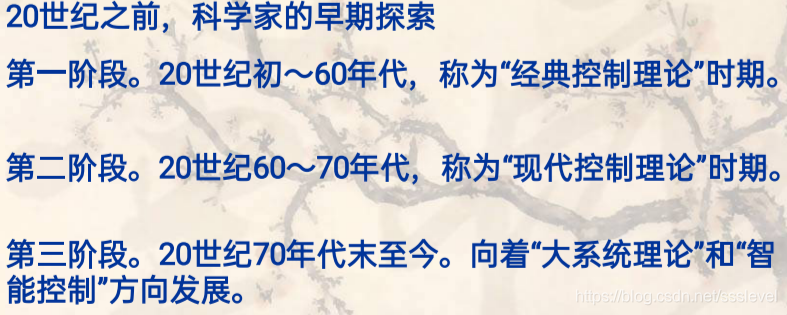当前位置:网站首页>Reading of denoising paper - [ridnet, iccv19] real image denoising with feature attention
Reading of denoising paper - [ridnet, iccv19] real image denoising with feature attention
2022-04-23 05:59:00 【umbrellalalalala】
Know that the account with the same name is published synchronously
Catalog
One 、 Detailed explanation of architecture parameters
This part starts with the architecture , The next part is about the key parts of the architecture motivation.

The details of the network architecture have been marked in the figure . The top half of the figure is the overall architecture , The lower half is a separate EAM The architecture of .
Input noisy image, Output noise-free image.
The author divides the architecture into three module:
- feature extraction: f 0 = M e ( x ) f_0=M_e(x) f0=Me(x), There is only one floor .
- feature learning residual module: f r = M f l ( f 0 ) f_r=M_{fl}(f_0) fr=Mfl(f0), By a number of EAM form .
- reconstruction module: y ^ = M r ( f r ) \hat{y}=M_r(f_r) y^=Mr(fr), There is only one floor .
loss function yes :
L ( w ) = 1 N ∑ i = 1 N ∣ ∣ R I D N e t ( x i ) − y i ∣ ∣ 1 = 1 N ∑ i = 1 N ∣ R I D N e t ( x i ) − y i ∣ L(w)=\frac{1}{N}\sum_{i=1}^{N}||RIDNet(x_i)-y_i||_1=\frac{1}{N}\sum_{i=1}^{N}|RIDNet(x_i)-y_i| L(w)=N1i=1∑N∣∣RIDNet(xi)−yi∣∣1=N1i=1∑N∣RIDNet(xi)−yi∣
kernel size Except for the finer convolution in the figure above is 1 × 1 1\times1 1×1, Everything else is 3 × 3 3\times3 3×3.
About channel, Almost all convolution layers are 64, In addition to the next layer in this structure, the lower sampling is 4:

This is channel-wise Of feature attention, Here's what it looks like after unfolding :

( Notice that the picture above is missing soft-shrinkage, The author in H D H_D HD Then I used it )
In the picture above d, The author uses 16, So it leads to H D H_D HD Then I got the only one channel by 4 Of feature map, Of all other layers channel All are 64 Of .
️ Be careful : The last multiplication is element-wise Of , Because of the size Different , Therefore, we need to carry out adaptive multiplication first , the 1 × 1 × c 1 \times 1 \times c 1×1×c The part of is expanded to h × w × c h \times w \times c h×w×c(adaptively rescaled), The expansion method is replication .
In the paper notation And abbreviations have a lot of , among ERB(enhanced residual block) Refers to :

The thin convolution layer in the figure above is the only one in the whole architecture 1 × 1 1\times1 1×1 The convolution of layer , All other convolutions are 3 × 3 3\times3 3×3 Of .
other notation And abbreviations are mostly marked in the figure above , What is not marked is also relatively simple , Don't say .
Two 、Contribution&innovation
Let's talk about it briefly , Then to important places , In the next part, I'll talk about .
The authors say their contribution as follows :
- Is the first to use in denoising feature attention Model of ;
- The existing model Increasing depth may not improve performance, And cause the gradient to disappear ;
- This is a one stage model( contrast CBDNet yes two stage model), There is only one stage of speech denoising ( contrast CBDNet There is estimated noise 、 There are two stages of denoising ).
Say that the second increase in depth does not increase performance , The author also said :
simple cascading the residual modules will not achieve better performance.
Compare the author's method : increase EAM The number of modules , Can improve performance,EAM It also includes residual learning Thought .
3、 ... and 、feature attention

( As a reminder g p g_p gp yes global pooling)
Or this structure , It is a feature attention Structure , According to the first part , It's a change feature map Different from channel The weight of . Of course, this can't be regarded as the originality of this work , The author said they were referring to :
Squeeze-and-excitation networks.
Of course, a little change has been made , Among the things above H D H_D HD In the heel ReLU, And the author follows soft-shrinkage.
The author's original words are also put here :
The feature attention mechanism for selecting the essential features.
Four 、 Data sets & Training details & Ablation Experiment
1, Training data set :
- synthetic image: BSD500,DIV2K,MIT-Adobe FiveK Generate ;
- real-world image: Yes SIDD,Poly,RENOIR Generate .
(paper I didn't say how to synthesize the noise map , Check the code , It should be to join directly Gaussion noise; For real noise maps , Look up the SIDD, It's with ground-truth Of noisy image dataset)
2, Data enhancement method :
- random rotation of 90°, 180°, 270°;
- flipping horizontally
3, Test data set :
- 4 A real noise image data set RNI15,DND,Nam,SIDD.
- 3 A synthetic noise image data set :widely-used 12 classical images,BSD68 color and gray 68 images.
4, Training details :
- batchsize=32,patchsize by 80 × 80 80\times80 80×80
5, Ablation Experiment :
- When LSC,SSC,LC Three connections (skip connection) When it's all used , The effect is the best ( These three connections are shown in the figure at the beginning of the article ), Remove the use of any connection , The effect will decrease .
️ Be careful : If you don't use these connections , Then increase the of the network depth Will not be raised performance. - Yes feature attention Better than nothing .

版权声明
本文为[umbrellalalalala]所创,转载请带上原文链接,感谢
https://yzsam.com/2022/04/202204230543474335.html
边栏推荐
- protected( 被 protected 修饰的成员对于本包和其子类可见)
- EditorConfig
- Use Matplotlib. In Jupiter notebook Pyplot server hangs up and crashes
- 编程记录——图片旋转函数scipy.ndimage.rotate()的简单使用和效果观察
- Latex快速入门
- 你不能访问此共享文件夹,因为你组织的安全策略阻止未经身份验证的来宾访问
- Complete example demonstration of creating table to page - joint table query
- opensips(1)——安装opensips详细流程
- Rsync for file server backup
- Understand the current commonly used encryption technology system (symmetric, asymmetric, information abstract, digital signature, digital certificate, public key system)
猜你喜欢

Pytorch learning record (V): back propagation + gradient based optimizer (SGD, adagrad, rmsporp, Adam)

delete和truncate

String notes

类的加载与ClassLoader的理解

Gaussian processes of sklearn

给yarn配置国内镜像加速器

Pytorch学习记录(十三):循环神经网络((Recurrent Neural Network)

自動控制(韓敏版)

Pytorch學習記錄(十三):循環神經網絡((Recurrent Neural Network)

字符串(String)笔记
随机推荐
去噪论文——[Noise2Void,CVPR19]Noise2Void-Learning Denoising from Single Noisy Images
interviewter:介绍一下MySQL日期函数
PyEMD安装及简单使用
Pyqt5 learning (I): Layout Management + signal and slot association + menu bar and toolbar + packaging resource package
Numpy common function table sorting of data processing
PyQy5学习(三):QLineEdit+QTextEdit
JSP语法及JSTL标签
Pytorch学习记录(三):神经网络的结构+使用Sequential、Module定义模型
治疗TensorFlow后遗症——简单例子记录torch.utils.data.dataset.Dataset重写时的图片维度问题
PyQt5学习(一):布局管理+信号和槽关联+菜单栏与工具栏+打包资源包
编写一个自己的 RedisTemplate
Postfix变成垃圾邮件中转站后的补救
去噪论文阅读——[RIDNet, ICCV19]Real Image Denoising with Feature Attention
如何利用对比学习做无监督——[CVPR22]Deraining&[ECCV20]Image Translation
delete和truncate
Pytorch Learning record (XIII): Recurrent Neural Network
治療TensorFlow後遺症——簡單例子記錄torch.utils.data.dataset.Dataset重寫時的圖片維度問題
Viewer: introduce MySQL date function
软件架构设计——软件架构风格
数字图像处理基础(冈萨雷斯)二:灰度变换与空间滤波